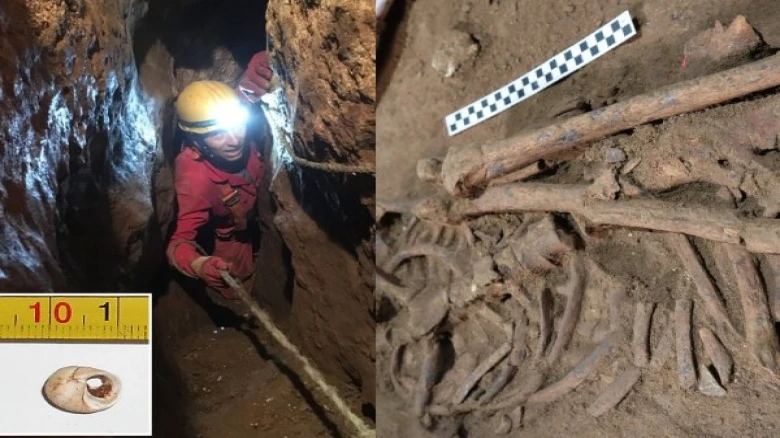The cave was discovered to contain the preserved skeleton remains of three adults and a juvenile from the Early Bronze Age...
Digital Desk: The University of Central Lancashire (UCLAN) discovered traces of human activity in the early Mesolithic period, revealing new information on our ancestors' technologies and cultural customs. An incredible discovery in the Heaning Wood Bone Cave in northern England has uncovered the region's earliest human bones, going back 11,000 years.
The cave was occupied during the early Mesolithic period (Middle Stone Age), when Homo sapiens, or modern humans, were the sole hominid species roaming the British Isles, according to lead archaeologist Martin Stables.
E.G. Holland discovered the Heaning Wood Bone Cave in Cumbria in 1958, and this limestone deposit with a vertical shaft has evolved into a unique karstic fissure system. The cave was discovered to contain the preserved skeleton remains of three adults and a juvenile from the Early Bronze Age. However, new digs by the UCLAN team have revealed the cave's real antiquity in the form of a collection of human remains dating back 11,000 years.
The archaeologists also discovered "stone tools, ceramics, and shell beads" in the Cumbria cave. A little periwinkle shell bead piqued my interest. The researchers were informed that the cave's residents had access to coastal marine resources.
The artefacts and bones were analysed by researchers from the University of Nevada and Pennsylvania State University. They discovered that the cave was used for burials approximately 4,000 years ago during the Early Bronze Age, as well as around 5,000 years ago during the Early Neolithic. While both of these dates were reasonably predicted, human bones carbon-dated to roughly 11,000 years ago in the Mesolithic period were a significant surprise.
The finding of these 11,000-year-old human remains is significant for more than just providing clear proof of human activity in northern Britain following the end of the last Ice Age. The surrounding relics provide proof of 11,000-year-old people's technologies and cultural customs. The BBC reports that the Cumbria cave remains to belong to the "oldest northerner."
Dr. Stable stated that he never expected to uncover anything like the "Early Mesolithic connection" in this cave. He stated that his research had "wound up in a position I never anticipated it to go to" after six years of investigating.
The researcher stated in an article published in The Mail that the age of the bones and artefacts "is stunning," adding that it is difficult to picture what life would have been like in the cave over 11,000 years ago.
Before this discovery, the earliest "northerner" was a 10,000-year-old burial from the nearby Kent's Bank Cavern on Morecambe Bay's north shore. Some of these bones were investigated by scientists from Liverpool John Moores University and the University of Nottingham, who discovered a fragment of the human leg bone that was slightly over 10,000 years old.


Leave A Comment